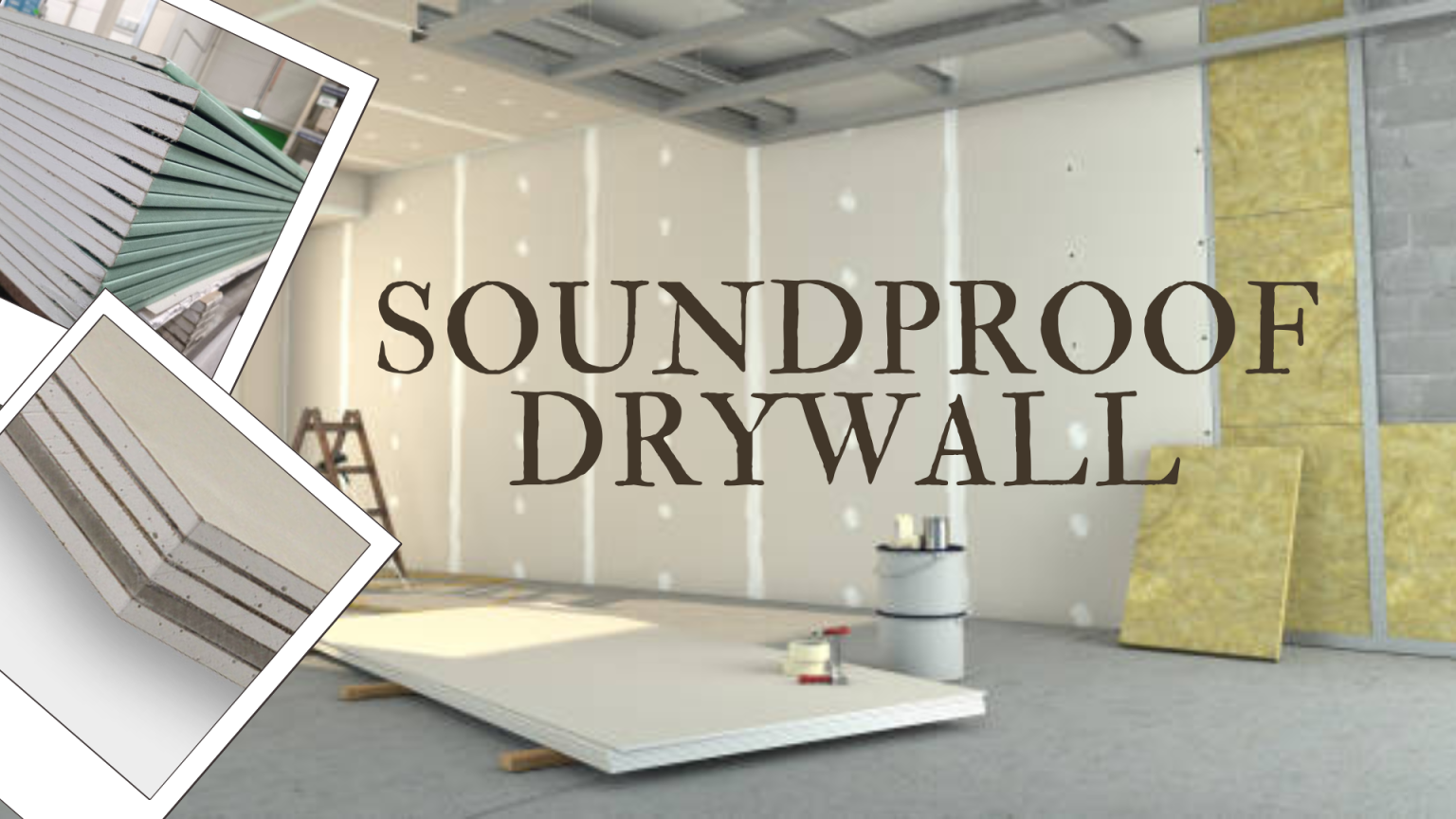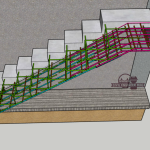
There are numerous reasons why you may want to install a sound barrier in your home. Perhaps your house is located on a busy street or intersection. Perhaps your bedrooms are separated by thin walls. There are many ways to make a room soundproof if you want more privacy, quiet, and comfort inside your home. In this article, we’ll look at one of the most effective ways to soundproof your home: using soundproof drywall.
What is Soundproof Drywall?
Soundproof drywall is a type of drywall that is built to minimize noise transfer. It is frequently used in offices, recording studios, and other places where it is essential to minimize noise pollution.
Soundproof drywall works by forming a barrier between the noise source and the surrounding area, absorbing and preventing the transmission of sound energy.
The material is frequently denser and heavier than normal drywall, and it might be reinforced with a substance that dampens sound, such as fiberglass.
Soundproof drywall can drastically decrease the level of excessive noise in a space, making it more comfortable and productive while still not completely eliminating all noise.
Furthermore, soundproof drywall can be combined with other sound-reducing measures such as acoustic panels and sound-dampening insulation to create an even more effective sound barrier.
SOUND TRANSMISSION CLASS (STC)
| STC | WHAT CAN BE HEARD AT THIS LEVEL? |
|---|---|
| 25 | A soft voice is heard and understood. |
| 30 | Normal voice can be heard and understood. |
| 35 | Loud voices can be heard and understood. |
| 40 | A loud voice is heard but is difficult to understand. |
| 45 | The point at which privacy begins. |
| 50 | Loud sounds can be heard, but they are quite weak. |
| 60+ | Good soundproofing starts to take place at this level. Neighbors are often not bothered by extremely loud conversations from within. |
It is important to know the Standard Transmission Class (STC) score of a certain drywall when deciding which the best soundproofing drywall to choose is. In 1961, the STC score was created. This numerical score indicates how much sound is blocked when passing through a specific substance. As a result, the more sound is muffled, the higher the score. A score of 20 would indicate poor soundproofing, whereas a score of 60 would indicate good soundproofing.
The STC scale does not measure every sound. Although many sounds fall below or above this range, the STC measures noise between 125 and 4000 Hz. STC is not the only option to take into account when low-frequency sounds like bass guitars or deep male voices need to be considered. The same holds true for noises with a high frequency above 4000 Hz.
How Does Soundproof Drywall Work?
Although conventional drywall will only partially block out noise, it will still help to muffle it. The majority of drywall has a solid gypsum core. Gypsum is a mineral composed of calcium sulphate that is commonly used in construction projects. It produces a rigid piece of drywall that vibrates in time with sound waves, allowing noise to enter a house or pass through rooms.
Standard Drywall vs Soundproof Drywall
Depending on the project you have in mind, you may need different levels of soundproofing. Regular drywall installed over wood studs, for instance, has an STC value of 33. The STC of two sheets of drywall with fiberglass insulation placed between them (one on each side of the wall) is about 44. This is a good standard for average houses.
This level might not be appropriate if you’re building a home theater or a space for your son’s band to practice every day. The STC ratings of many soundproof drywall sheets range from 50 to 80. The cost of the soundproofing drywall increases with the STC score.
Also Read: Fiber Cement Flooring | Wall Cladding | Box Culvert Reinforcement Layout | Types of Beam | Paint Chalking
Deciding Which Kind of Drywall to Use
There are several factors to consider when determining whether to utilize normal sheetrock or soundproof sheetrock. Each is unique and should be decided on a case-by-case basis.
Cost
Soundproof sheetrock has a substantially greater price than standard sheetrock. Depending on the size of your space, the cost of this specific acoustic drywall might be more than you want to spend.
Frequency of Use
You can decide if the additional expense is justified based on how frequently the room will be used. Rooms that are utilized every day will have different considerations than those that are only used once a week.
Level of Noise
The noise level in the room is a significant consideration in your decision. The higher the level of noise, the more important it is to employ sound-limiting measures.
Location
The type of sheetrock to be used will be determined by the location of the room in the house. If your new home theater is in the basement, the floor will also help to provide a sound barrier. Nevertheless, if you place it in a room that is on the same level as your other rooms, you might require additional soundproofing to allow those who live in the nearby rooms to live without the constant noise.
Comfort Level
Every person reacts differently to noise. A person who is highly sensitive to noise will be more prepared to spend the additional funds to be more comfortable.
Noise Restrictions and Neighbors
Be aware of your local noise ordinances. Moreover, be considerate of your neighbors’ serenity even if your daughter’s beginning violin practice does not break a city noise limit.
Soundproof Drywall Brands and Option
Soundproofing drywall manufacturers are not as numerous as standard drywall manufacturers. Still, there are a few alternative solutions on the market.
QuietRock Drywall
To provide higher sound absorption without sacrificing floor space, Quietrock uses “thin wall technology.” They have acoustic sheetrock in thicknesses of 1/2″, 5/8″, and 1 3/8″.
*STC: Depending on the frame type (wood or steel), the STC rating of wood frames is higher.
CertainTeed Acoustic Drywall
A viscoelastic polymer is placed between two sheets of rigid gypsum in CertainTeed noise-reducing drywall. Each of their two varieties of acoustic sheetrock contains mold- and moisture-resistant paper that is entirely recycled. This will result in improved indoor air quality. Also, both products are simple to score and snap, which results in quicker installation timeframes.
*STC: Depending on the type of frame (wood or steel) and the type of drywall and insulation on the facing wall
National Gypsum SoundBreak
Gold Bond building items are provided by National Gypsum, including Gold Bond Soundbreak acoustical panels. Two layers of mold-resistant gypsum board are placed between a viscoelastic damping polymer. These boards are kept together by a high-density gypsum core that is placed between sheets of their recognizable purple paper. This paper is moisture, mold, and mildew resistant and 100% recycled.
*STC: Depending on the type of frame (wood or steel) and the type of drywall and insulation on the facing wall.
What Are The Benefits Of Soundproof Drywall?
Soundproof drywall, also called acoustical drywall or noise-reducing drywall, is a form of drywall that is meant to reduce noise. Using soundproof drywall in your house or place of business has a variety of advantages, including:
Improved Acoustics:
Soundproof drywall can improve a room’s acoustics dramatically by minimizing echo and reverberation. This can enhance the sound quality and increase comfort in a space.
Fire Resistance
It frequently contains fire-resistant materials, which can keep you safe in the event of a fire emergency.
Less Thickness
The STC rating for R-13 is slightly lower than that of R-16, but the overall soundproofing is higher. It can be utilized in more locations where you might not want to erect a full wall of R-16 because it has less mass.
Temperature Insulation
It can also aid in insulating against temperature variations by securing air pockets. Also, because it is less dense, it can help lower your energy expenses.






